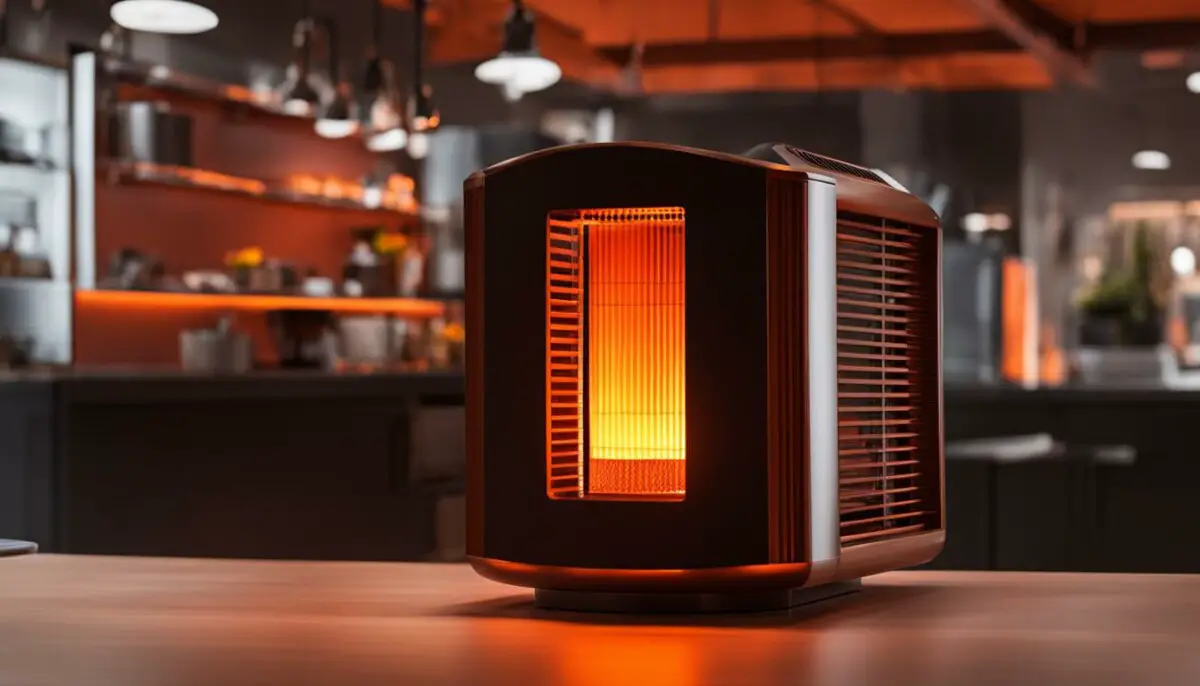Last Updated on 5 months by Francis
When it comes to choosing a heating system, one of the most critical factors is the associated cost. Infrared heaters have gained popularity in recent years due to their energy efficiency and cost-effectiveness. However, before investing in an infrared heater, it’s essential to understand the factors that impact its running costs.
In this guide, we will explore the ins and outs of running an infrared heater, from calculating energy consumption to factors affecting costs and cost-effective tips for running it. By the end of this article, you will have a better understanding of the cost to run an infrared heater and how to reduce your heating expenses.
Contents
Key Takeaways:
- Running an infrared heater involves various factors that impact the associated costs.
- Calculating energy consumption is crucial for estimating running costs.
- Optimizing factors such as insulation, room size, and temperature settings can reduce operating expenses.
- Long-term benefits such as lower electricity bills need to be considered when assessing the cost-effectiveness of an infrared heater.
- Implementing cost-effective tips and practices can help reduce heating costs.
How Do Infrared Heaters Work?
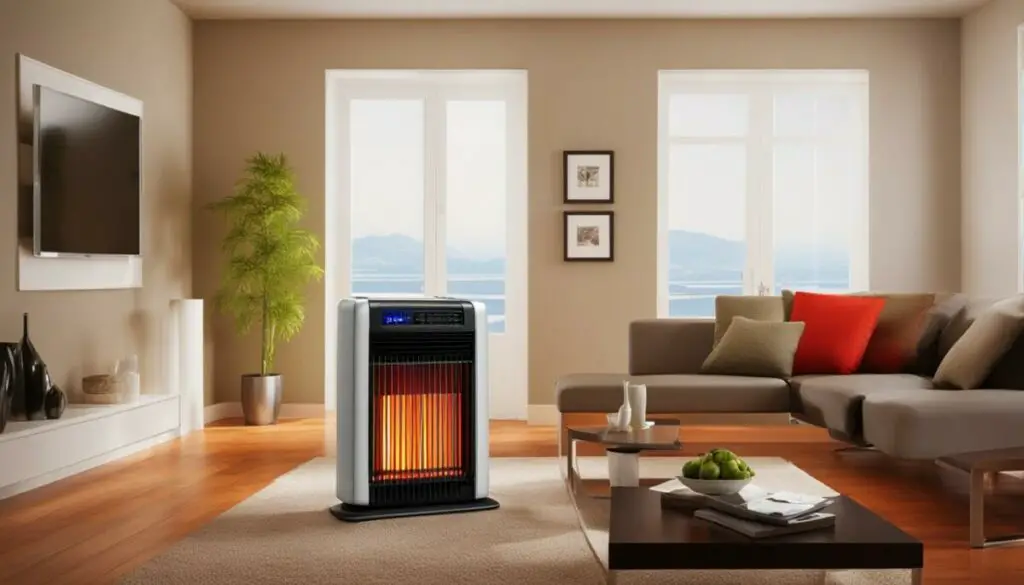
If you’re considering investing in an infrared heater, it’s essential to understand the science behind this technology to optimize its energy efficiency and reduce your operating costs.
Infrared heaters work by emitting electromagnetic radiation, which heats up objects or people in its vicinity, rather than heating the air itself. This process, known as radiation heating, is more energy-efficient than conventional heating, which heats the air and can be lost through ventilation or leaks.
The energy efficiency of an infrared heater depends on several factors, including the type of heater, wattage, and heating time. A more efficient infrared heater will emit more radiant heat with less energy usage, resulting in lower costs over time.
One way to optimize energy efficiency is to ensure that the heater’s wattage matches the size of the room. Overpowered heaters in small rooms can lead to unnecessary energy usage, while underpowered heaters may not effectively heat larger spaces.
Another factor that can affect the energy efficiency of an infrared heater is its placement. For optimal heating, the heater should be installed in a location that allows for maximum coverage of the room without obstruction. Additionally, it’s essential to consider insulation levels and the capacity of windows and doors to reduce heat loss.
By optimizing these factors, you can significantly reduce your operating costs and achieve a cost-effective infrared heating system that provides warmth and comfort while remaining energy-efficient.
Cost Optimization for Infrared Heating
To optimize your infrared heating costs, it’s essential to focus on energy efficiency and cost-effectiveness. Here are some tips to help you achieve these goals:
- Invest in a high-quality infrared heater: While a more expensive upfront cost, a high-quality infrared heater will be more energy-efficient, resulting in lower operating costs over time.
- Choose the right wattage for your room: Ensure that you choose a heater with the appropriate wattage for your room size to avoid unnecessary energy usage.
- Properly insulate your space: Insulation can significantly impact the effectiveness of your infrared heater. Ensure that your walls, windows, and doors are adequately insulated to reduce heat loss.
- Use a programmable thermostat: A programmable thermostat allows you to set temperature schedules and avoid heating an empty room, leading to significant energy savings.
- Regularly maintain your heater: Proper maintenance, such as cleaning the heater’s reflectors and ensuring proper ventilation, can enhance its performance and reduce energy usage.
By implementing these strategies, you can achieve optimal energy efficiency and reduce the cost of running your infrared heater, making it a cost-effective heating solution for your home or workspace.
Calculating the Energy Consumption of an Infrared Heater
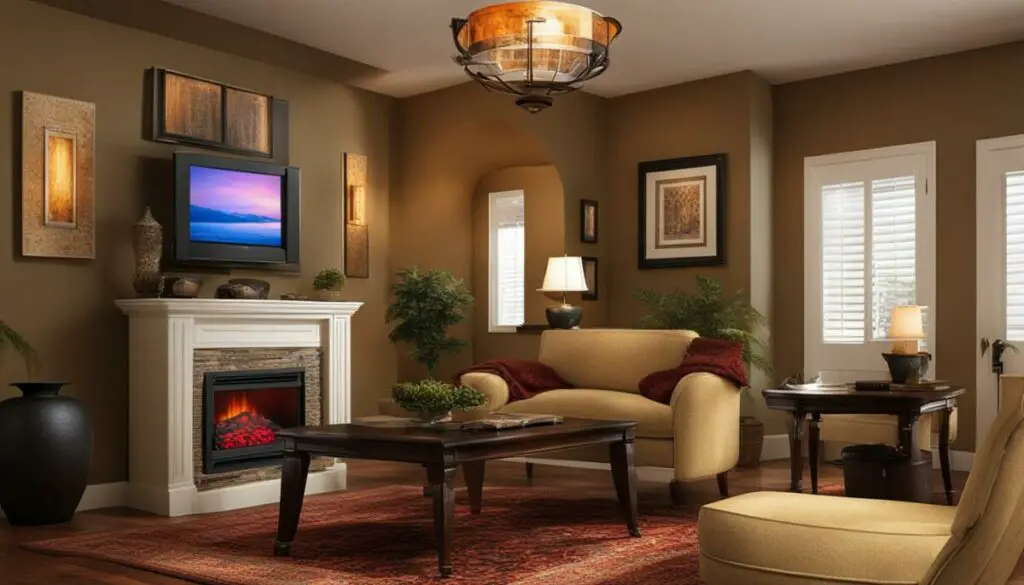
Calculating the energy consumption of an infrared heater involves understanding the power rating and usage patterns of the device.
The power rating of an infrared heater is usually specified in watts (W), and it indicates how much energy the heater consumes when running at maximum capacity. You can find the power rating of your heater on its label or in the user manual. To calculate the energy consumption of the heater, you need to multiply the power rating by the number of hours the heater is running. For example, if your infrared heater has a power rating of 1000W and you run it for 6 hours a day, the daily energy consumption would be:
1000W x 6 hours = 6000 watt-hours (Wh) or 6 kilowatt-hours (kWh)
Keep in mind that the actual energy consumption may vary depending on the usage pattern of the heater. For instance, if you only run the heater at 50% capacity, the energy consumption will be half of the power rating. Similarly, if you use a timer or thermostat to control the heater, the energy consumption will be lower than running the heater continuously.
You can use the following formula to calculate the hourly energy consumption of an infrared heater:
Energy Consumption (kWh) = Power Rating (W) x Hours of Use / 1000
For example, if your infrared heater has a power rating of 1500W and you run it for 4 hours a day:
Energy Consumption (kWh) = 1500W x 4 / 1000 = 6 kWh
Knowing the energy consumption of your infrared heater enables you to estimate the related costs and make informed decisions about cost savings.
Factors Impacting the Cost of Running an Infrared Heater

Understanding the factors that impact the cost of running an infrared heater is essential for cost optimization. By paying attention to these factors, you can effectively manage your expenses without sacrificing comfort. Here are some of the most significant factors to consider:
Room Size
The size of the room you want to heat plays a significant role in determining the energy consumption of your infrared heater. Larger rooms require more heating power, which means more energy consumption and higher costs. To optimize your heating costs, it’s best to choose an infrared heater that matches the size of your room.
Insulation
Insulation is another crucial factor that affects the cost of running an infrared heater. Poor insulation leads to heat loss, which means that your heater will consume more energy to maintain the desired temperature. To minimize energy consumption and lower your heating costs, it’s essential to improve the insulation in your home. This can be done by sealing any gaps or cracks in the walls, windows, and doors and adding insulation to the attic or crawl space.
Temperature Settings
The temperature settings of your infrared heater also impact its energy consumption and related costs. Keeping your heater at higher temperatures for extended periods leads to higher energy consumption and costs. To optimize your heating costs, it’s best to set your infrared heater at a comfortable temperature and avoid cranking it up unnecessarily. You can also consider using a programmable thermostat to adjust the temperature settings automatically throughout the day.
Heater Type
The type of infrared heater you choose influences its energy efficiency, energy consumption, and operating costs. Some types of infrared heaters are more energy-efficient than others, while some may require more electricity to operate. When choosing an infrared heater, it’s essential to consider its energy efficiency rating, power consumption, and other features that impact its operating costs.
Maintenance
Maintaining your infrared heater is an essential aspect of optimizing its energy consumption and related costs. Regular maintenance ensures that the heater runs smoothly and efficiently, minimizing energy consumption and downtime. It’s best to follow the manufacturer’s instructions for maintenance and cleaning to ensure that your infrared heater operates at its optimal capacity.
Cost-Effective Tips for Running an Infrared Heater
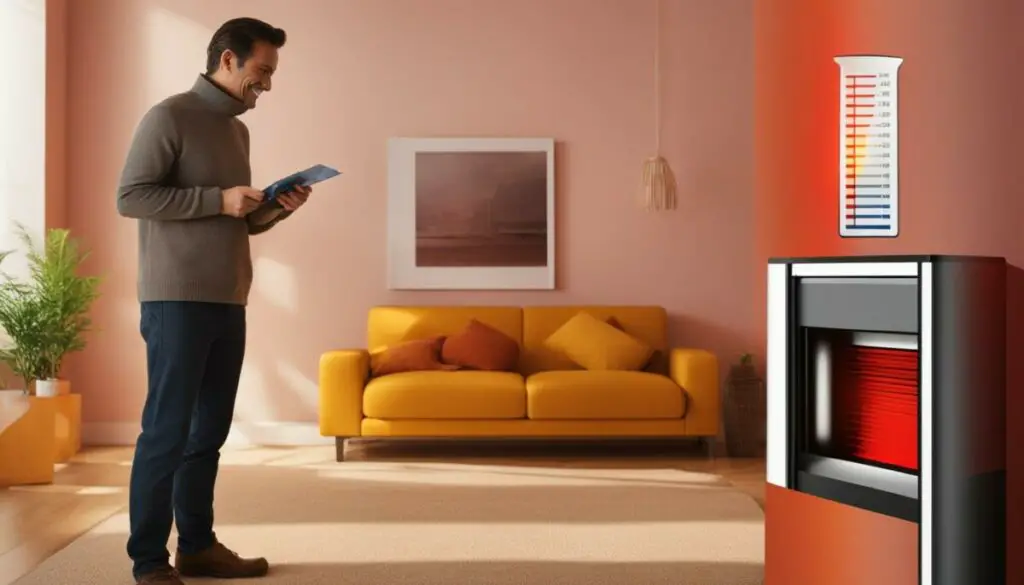
Running an infrared heater doesn’t have to break the bank. With a few cost-effective tips, you can significantly reduce your infrared heater electricity cost without sacrificing comfort.
1. Adjust Your Thermostat Settings
One of the simplest and most effective ways to save on infrared heating costs is by adjusting your thermostat settings. Lowering the temperature by just a few degrees can lead to significant savings over time. Consider setting your thermostat between 65 and 68 degrees during the winter months, and wearing warm clothing to maintain comfort.
2. Improve Your Insulation
Poor insulation can lead to heat loss and higher heating costs. By improving your insulation, you can reduce heat loss and save on energy costs. Consider adding insulation to your walls, attic, and windows. You can also use draft stoppers to block drafts and keep heat inside.
3. Strategically Place Your Infrared Heater
Where you place your infrared heater can impact its effectiveness and cost. Consider placing it in a central location in the room, away from other heat sources, and where it can freely distribute heat. This can help to reduce energy consumption and costs while maximizing comfort.
4. Regularly Maintain Your Infrared Heater
Regular maintenance of your infrared heater can help you avoid costly repairs and improve its energy efficiency. Make sure to clean the heating element, air filters, and fan regularly. Consider having your heater serviced by a professional annually to ensure optimal performance.
5. Consider Using a Programmable Thermostat
A programmable thermostat allows you to schedule your heating based on your daily routine. Consider setting your thermostat to lower the temperature when you’re away from home or sleeping and raise it when you’re at home and awake. This can lead to significant savings on your infrared heater electricity cost over time.
By implementing these cost-effective tips, you can significantly reduce your infrared heating costs while maintaining optimal comfort. Remember to regularly assess your usage and make adjustments as needed to continue optimizing your energy consumption and costs.
Comparison of Running Costs for Different Infrared Heaters
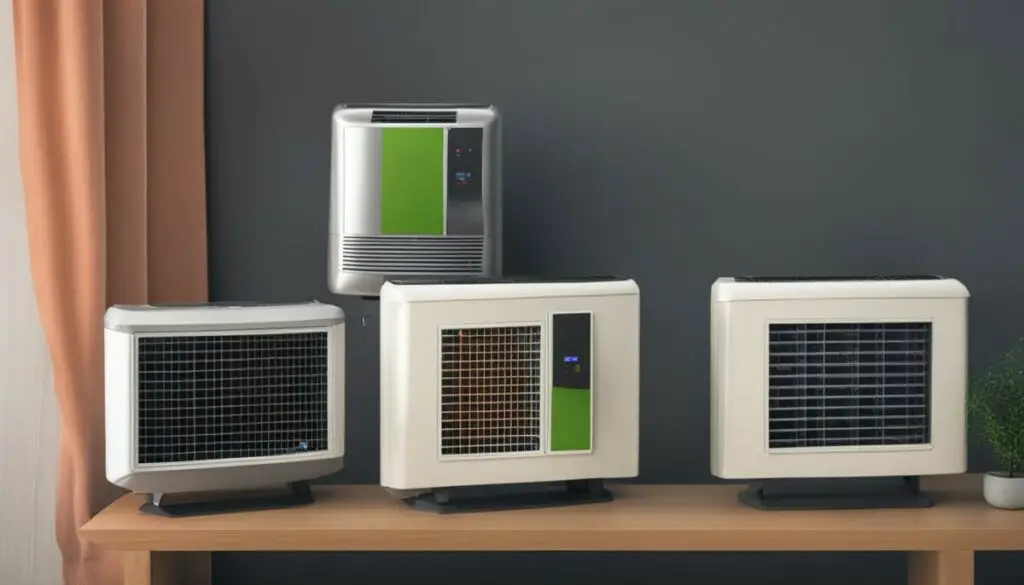
If you’re in the market for an infrared heater, it’s essential to consider the cost of running the unit along with its other features and specifications. To help you make an informed decision, we compared the running costs of different infrared heaters based on their energy consumption and other factors.
Infrared Heater 1
| Feature | Value |
|---|---|
| Power Rating | 1500 Watts |
| Energy Consumption per Hour | 1.5 kWh |
| Electricity Cost per Hour (at $0.12/kWh) | $0.18 |
Infrared Heater 2
| Feature | Value |
|---|---|
| Power Rating | 1000 Watts |
| Energy Consumption per Hour | 1 kWh |
| Electricity Cost per Hour (at $0.12/kWh) | $0.12 |
Based on the above comparison, Infrared Heater 2 has a lower power rating and energy consumption, resulting in lower electricity costs per hour. While the upfront cost of the two heaters may be similar, Infrared Heater 2 may be a more cost-effective option in the long run.
The Impact of Room Size and Insulation on Heating Costs

When it comes to running an infrared heater, the size of the room and the insulation can have a significant impact on the overall heating costs. Factors such as ceiling height, number of windows, and drafts can cause heat loss and lower the efficiency of your infrared heater.
Larger rooms require more energy to heat and maintain the desired temperature. As such, it’s essential to choose the appropriate size of infrared heater for your space. An undersized heater will have to work harder to heat a large area, resulting in higher running costs.
In addition to room size, proper insulation plays a crucial role in reducing infrared heater running costs. Insulation helps keep the heat inside the room, preventing it from escaping through windows, walls, and doors. By improving your insulation, you can significantly reduce your heating costs and improve the efficiency of your infrared heater.
To determine the appropriate infrared heater size for your room, you can use the following general rule of thumb: multiply the room’s square footage by 10 to get the required wattage. For example, a 200 square foot room would require a 2000 watt infrared heater.
| Room Size (square feet) | Infrared Heater Wattage |
|---|---|
| 100-150 | 1500 |
| 150-200 | 2000 |
| 200-250 | 2500 |
By matching your infrared heater size to your room dimensions, you can avoid wasting energy and lower your heating costs. Additionally, improving your insulation can lead to long-term cost savings by reducing the energy required to maintain a comfortable temperature.
Energy-Saving Features of Infrared Heaters
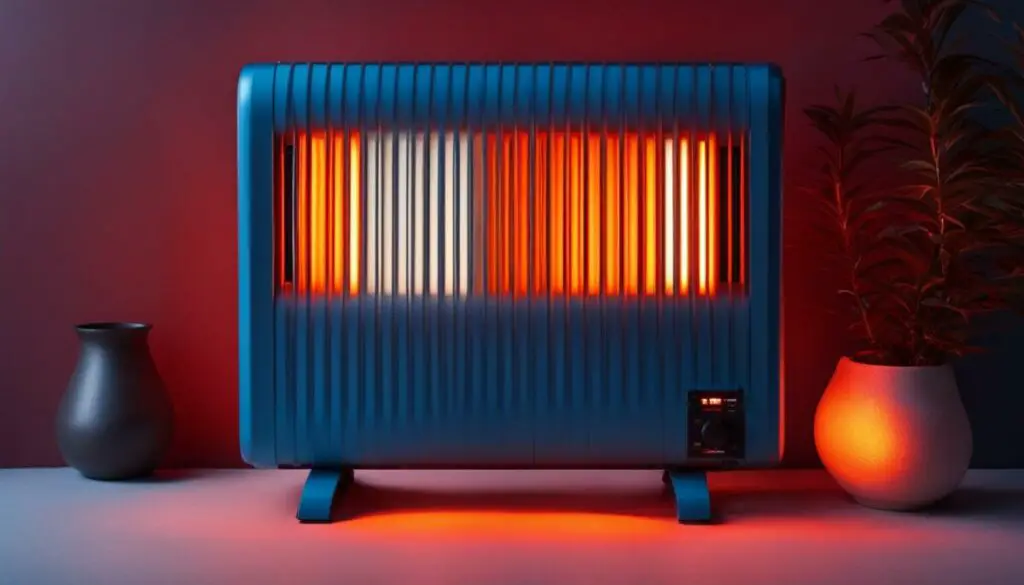
Modern infrared heaters come equipped with various energy-saving features that can help optimize energy usage and reduce operating costs. By leveraging these features, you can save money while enjoying effective heating. Below are some of the most popular energy-saving features found in newer infrared heaters:
1. Thermostats
Thermostats are an essential feature in most infrared heaters. They allow you to control the temperature of your room and turn off the heater when the desired temperature is reached. By using a thermostat, you can maintain a comfortable temperature while minimizing energy usage and lowering your electricity bill.
2. Timer Function
Some infrared heaters come equipped with a timer function that enables you to set the duration for which the heater operates. This feature is especially useful when you want to heat a room for a set period, e.g., when you go to bed. By setting the timer, you avoid wasting energy by leaving the heater on for longer than necessary.
3. Overheat Protection
Overheat protection is another critical feature in infrared heaters. It automatically turns off the heater if it exceeds a specific temperature, thus preventing any damage. Additionally, this feature can help reduce energy usage by ensuring the heater only operates within safe temperature limits.
4. Eco Mode
Eco mode is a newer feature found in some infrared heaters. When activated, this mode optimizes energy usage and reduces your electricity bill by running the heater at low power. The heater can then adjust its power output based on the ambient temperature, thereby saving energy while providing effective heating.
5. Dual Heating Function
Some infrared heaters come equipped with a dual heating function, which provides two heat settings. The lower setting consumes less power, making it a cost-effective option when only a small amount of heat is required. The higher setting is used when a room requires more heat. By switching between these two settings, the heater can effectively heat your room while minimizing energy consumption.
6. Remote Control
Most modern infrared heaters come with a remote control that enables you to adjust the temperature and power settings without getting up from your seat. While not a direct energy-saving feature, the convenience of a remote control can help prevent users from leaving the heater on for extended periods, ultimately leading to energy savings.
By selecting an infrared heater with some or all of the above features, you can optimize energy usage and reduce your electricity bill while providing effective heating.
Understanding the Cost of Infrared Heater Installation
If you’re considering an infrared heating system, it’s essential to understand the cost of installation, which can impact the long-term cost-effectiveness of your heating system. Several factors can impact the up-front costs of installation:
| Factor | Cost Impact |
|---|---|
| Type of Heater | The cost of infrared heaters can vary depending on the type, size, and features. Portable heaters may be less expensive, while installed heaters may require additional wiring and professional installation fees. |
| Wiring Requirements | The wiring requirements for infrared heaters can impact the installation costs. Heaters that require high-voltage wiring may require additional electrical work, leading to higher installation fees. |
| Professional Installation Fees | If you choose to have your infrared heater installed by a professional, you should consider the installation fees that come with this service. These fees can vary based on the location, the complexity of the installation, and the company providing the service. |
While the cost of installation is an important factor to consider, it’s also essential to weigh the long-term savings of infrared heating. By conducting a cost analysis, you can determine if the up-front costs of installation can be outweighed by the long-term savings in energy consumption and lower heating bills.
Analyzing the Long-Term Cost Benefits of Infrared Heating
While infrared heating systems may have higher upfront costs, they often offer significant long-term cost benefits. In this section, we will conduct a comprehensive cost analysis to compare the long-term savings of using an infrared heater with traditional heating methods.
Infrared Heater Cost Analysis
To accurately analyze the long-term cost benefits of using an infrared heater, we need to consider various factors, including:
- The initial purchase and installation costs of the heater
- The ongoing energy consumption and associated costs
- The lifespan of the infrared heater, as compared to traditional heating systems
- The potential maintenance and repair costs over time
According to our research, infrared heaters have a lifespan of approximately 20 years, as compared to traditional heating systems, which typically last around 10-15 years. This longer lifespan translates to a considerable cost advantage over time.
Moreover, infrared heaters consume less energy than traditional heating methods, resulting in lower electricity bills and long-term energy savings. Based on our calculations, the average energy consumption of an infrared heater is approximately 30-50% less than traditional heating methods, such as convection and baseboard heaters.
When comparing the purchase and installation costs of an infrared heater with traditional heating systems, the former may have a higher upfront cost due to additional wiring requirements and professional installation fees. However, these costs can be offset by the long-term energy savings and lower maintenance costs.
Overall, our cost analysis indicates that investing in an infrared heating system can lead to significant long-term cost benefits and energy savings.
“Infrared heaters consume less energy than traditional heating methods, resulting in lower electricity bills and long-term energy savings.”
Cost-Effective Infrared Heating
While the cost benefits of using an infrared heater may be substantial, it’s important to ensure that you are using the system in a cost-effective manner to maximize savings. Here are some tips to optimize your infrared heating system for cost efficiency:
- Install the heater in well-insulated rooms to minimize heat loss
- Use a programmable thermostat to set temperature and usage patterns
- Clean and maintain the heater regularly to ensure optimal performance
- Consider using an energy-saving mode or timer function on your infrared heater to reduce energy usage
By following these tips and optimizing your infrared heating system, you can maximize cost savings and achieve optimal comfort in your home.
Tips for Optimizing Energy Usage and Costs
Infrared heating can offer significant cost savings when used correctly. To maximize your cost-effectiveness, consider implementing the following tips for optimized energy usage and costs:
1. Strategic Placement
Proper placement of your infrared heater can have a significant impact on its effectiveness and efficiency. Consider placing the heater in a location that will allow the heat to circulate evenly throughout the room. Additionally, make sure the heater is not obstructed by furniture or other objects that may impede the flow of heat.
2. Regular Maintenance
Like any other appliance, your infrared heater requires regular maintenance to perform at its best. This means cleaning the filters and ensuring that all components are in good working order. When your heater is well-maintained, it operates more efficiently, which helps to reduce your energy consumption and costs.
3. Insulation Improvements
Proper insulation in your home can significantly reduce your heating costs. Make sure your home is properly insulated to prevent heat loss and keep warm air inside. This can be achieved through simple measures like sealing cracks and gaps around doors and windows or installing insulation in the attic or walls.
4. Optimal Temperature Settings
Setting the temperature on your infrared heater too high can result in unnecessary energy consumption and higher costs. Consider setting your heater to a comfortable temperature that is not too high or too low. This will help to optimize your energy usage and reduce your operating costs.
5. Energy-Saving Features
Many modern infrared heaters come equipped with energy-saving features, such as timers or automatic shut-off functions. Take advantage of these features to minimize energy consumption and optimize your heating costs.
“By implementing these energy-saving tips and strategies, you can enjoy the comfort of infrared heating while keeping your costs under control.”
Conclusion
Running an infrared heater is a cost-effective and energy-efficient way to achieve optimal comfort during colder months. As we’ve discussed, there are various factors that contribute to the overall cost of running an infrared heater, such as insulation, room size, and temperature settings. By understanding these factors and implementing cost-effective strategies, you can minimize your expenses without sacrificing comfort.
How Much Does It Cost to Run an Infrared Heater?
The cost to run an infrared heater depends on the specifications of your heater, usage patterns, and other factors we’ve explored. However, on average, you can expect to spend between $0.10 to $0.20 per hour to operate an infrared heater, which is significantly less than traditional heating methods.
Tips for Optimizing Energy Usage and Costs
To further optimize your energy usage and costs, consider implementing the following tips:
- Adjust temperature settings based on occupancy and time of day to reduce unnecessary heating.
- Place your heater strategically to maximize heat distribution and minimize energy waste.
- Regularly clean and maintain your heater to ensure optimal performance and energy efficiency.
By following these tips and implementing cost-effective strategies, you can enjoy the benefits of infrared heating while minimizing your expenses.
Thank you for joining us on this exploration of the cost to run an infrared heater. We hope this guide has provided you with valuable insights and practical tips for achieving optimal comfort in a cost-effective manner.
FAQ
How much does it cost to run an infrared heater?
The cost to run an infrared heater depends on various factors such as the power rating of the heater, the duration of usage, and the local electricity rates. It is recommended to refer to the heater’s specifications and estimate the energy consumption based on your usage patterns to get a more accurate cost estimation.
How do infrared heaters work?
Infrared heaters work by emitting infrared radiation, which directly heats objects and people in its path rather than the surrounding air. This makes them more energy-efficient as they don’t waste energy heating the air, resulting in quicker and more targeted heating.
How can I calculate the energy consumption of an infrared heater?
To calculate the energy consumption of an infrared heater, multiply the power rating of the heater (in watts) by the number of hours it is used per day. Then, multiply this by the electricity rate in your area (in kilowatt-hours) to estimate the daily, monthly, or annual cost of running the heater.
What factors impact the cost of running an infrared heater?
Several factors can influence the cost of running an infrared heater, including insulation levels in the room, the size of the room being heated, temperature settings, duration of usage, and local electricity rates. Optimizing these factors can help you reduce heating costs.
How can I make my infrared heater more cost-effective?
To make your infrared heater more cost-effective, consider setting the thermostat to the optimal temperature, improving insulation in the room, and regulating usage based on occupancy. Regular maintenance of the heater and keeping doors and windows closed can also help maximize energy efficiency.
Is there a cost comparison for running different infrared heaters?
Yes, running costs can vary for different models of infrared heaters based on their specifications and features. It is advisable to compare the energy efficiency ratings and energy consumption of different models to determine the most cost-effective option for your heating needs.
How does room size and insulation impact heating costs?
Room size and insulation play a significant role in determining heating costs with an infrared heater. Smaller rooms require less energy to heat, while well-insulated rooms retain heat more effectively, reducing the need for continuous heating. Insulating windows, doors, and walls can improve energy efficiency and lower costs.
Do infrared heaters have energy-saving features?
Many modern infrared heaters come with energy-saving features such as programmable timers, thermostat controls, and motion sensors. These features help optimize energy usage by allowing you to regulate temperature settings, control operation times, and minimize energy waste, resulting in cost savings.
What factors contribute to the cost of infrared heater installation?
The cost of infrared heater installation can vary based on factors such as the type of heater, additional wiring requirements, and professional installation fees. It is recommended to consult with a qualified electrician or heating specialist to determine the specific installation costs for your chosen heater model.
Are there long-term cost benefits to using infrared heating?
While upfront costs may be higher for infrared heating systems compared to traditional methods, they often offer long-term cost benefits. Infrared heaters are usually more energy-efficient and can result in significant savings on electricity bills over time. Considering the long-term cost benefits is important when deciding on investing in an infrared heater.
What are some tips for optimizing energy usage and costs with an infrared heater?
To optimize energy usage and costs with an infrared heater, consider strategic placement of the heater for maximum heat distribution, regular maintenance to ensure optimal performance, and implementing energy-saving practices such as closing off unused spaces, using timers, and maintaining adequate insulation throughout the space.

